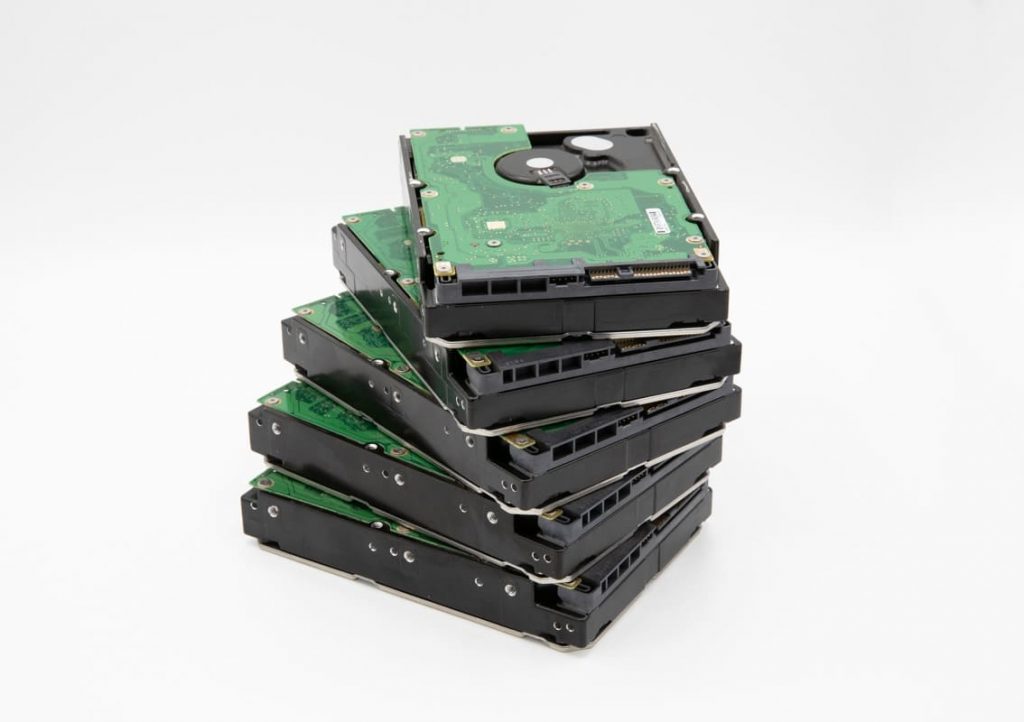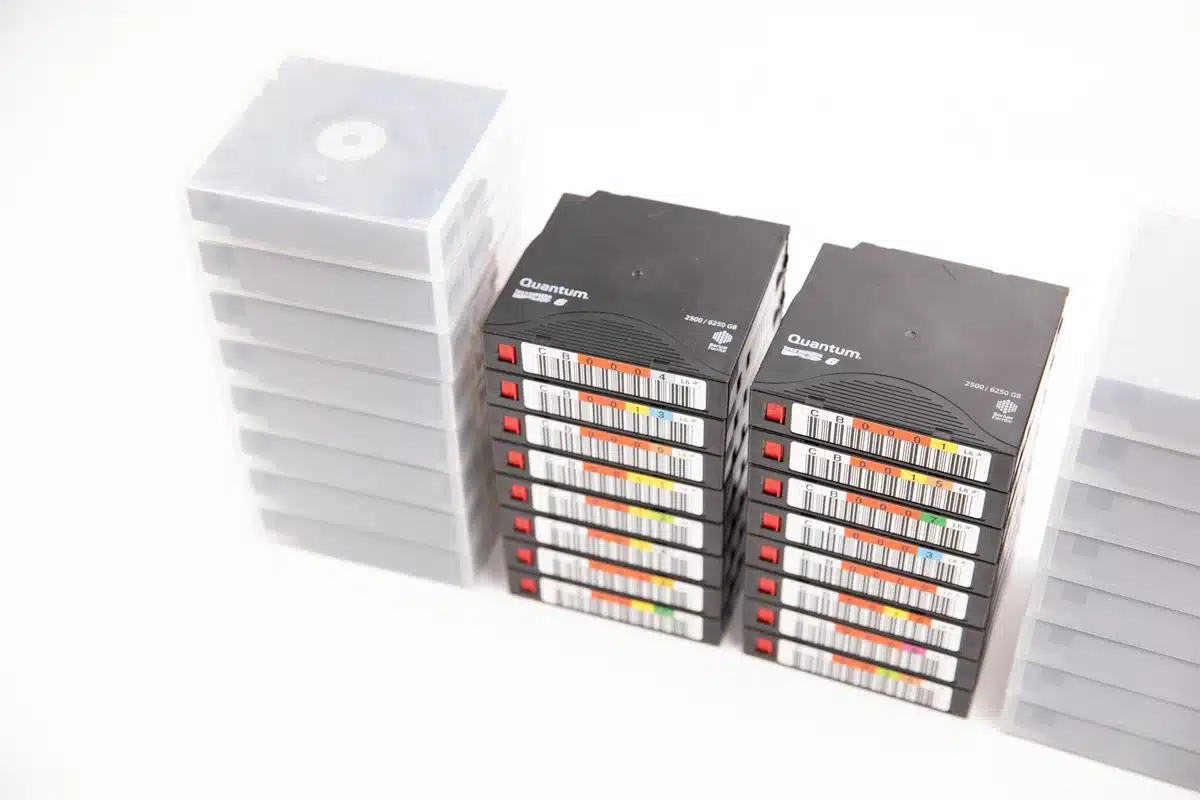“Tape backup vs disk backup: which is the superior solution for your data storage needs?” This question often sparks a lively debate among IT professionals. With both options offering unique advantages, the choice isn’t straightforward. Let’s delve into the specifics of tape backup and disk backup systems to help you make an informed decision.
Tape Storage Backup
Tape storage has been around for decades and is known for its durability and reliability. It works by recording data onto magnetic tapes stored in a protective cartridge. Tape storage is typically used for long-term archiving and offline storage, as it can hold vast amounts of data at a relatively low cost per gigabyte.
Additionally, tape cartridges can be transported offsite for disaster recovery purposes. However, accessing data on tape storage can be time-consuming, as the tapes must be physically retrieved and inserted into a tape drive.
Disk Drive Storage as a Backup
On the other hand, disk drive storage refers to using hard drives to back up data. This method is typically faster than tape storage, as data can be accessed almost instantly. Drive storage is also becoming more affordable as the cost of hard drives continues to decrease.
However, drive storage is less reliable than tape storage for long-term archiving. Hard drives can fail unexpectedly.
Tape vs Disk - Main Factors
When deciding between tape storage and drive storage for backup purposes, there are a few factors to consider. Firstly, how much data do you need to back up? If you have a large number of files that needs to be stored long-term, tape storage may be the more cost-effective option. However, drive storage may be more practical if you only need to back up a small amount of data.

Secondly, how frequently do you need to access the data? Drive storage may be the better choice if you need to access the data often. However, tape technology may be a better option if the data is only accessed infrequently.
Lastly, what is your budget for data backup? Tape systems can be expensive to set up initially, but the cost per gigabyte is low. Drive storage systems may be more affordable upfront, but the cost per gigabyte can be higher.
Both tape storage and drive storage have their advantages and disadvantages when it comes to backup. Tape storage is best for long-term archiving and offline storage, while drive storage is best for frequent data access.
Ultimately, the choice between the two methods depends on your specific needs and budget.
Tape Storage vs Disk Storage - Other factors
There are several other features to consider when choosing between tape and drive storage for backup. One major consideration is the speed of backup and recovery. Tape storage can be slower than drive storage, as it requires physically retrieving tapes and loading them into a drive. However, tape storage can be faster for large-scale backups, as it can write data to multiple tapes simultaneously.
In contrast, drive storage can be faster for smaller-scale backups, as data can be written and read almost instantly. The choice between the two methods depends on the size of the backup and how quickly data needs to be recovered.
Another consideration is the level of security required for the backup. Tape storage is often used for offline storage, which can provide an added layer of protection against cyberattacks and data breaches. The tapes can be physically stored in a secure location, such as a safe or offsite storage facility.
On the other hand, drive storage is typically connected to a network or computer, making it more vulnerable to security threats.

However, encryption and other security measures can be implemented to protect a drive storage backup. It is also important to consider the lifespan and durability of the storage media. Tape backups are known for their longevity, as they can last for decades when stored properly. In contrast, hard disks have a limited lifespan and can fail unexpectedly.
Additionally, hard drives are vulnerable to physical damage, such as drops or water damage. When using drive storage for backup, it is important to regularly check the health of the drives and replace them as needed to ensure data is not lost.
Another consideration is the scalability of the backup solution. Tape media can be difficult to scale up or down, as it requires purchasing additional tape drives and cartridges. On the other hand, drive storage can be easily scaled by adding extra hard drives. This can be particularly useful for businesses or individuals with growing data storage needs.
| Key Features | Tape Backup | Disk Backup |
|---|---|---|
| Cost | Typically lower initial cost per gigabyte | Higher initial cost, but lower ongoing costs |
| Speed | Slower data recovery | Faster data access and recovery |
| Capacity | High storage capacity | Less capacity compared to tape |
| Reliability | Lower reliability, potential for physical damage | Higher reliability, less prone to physical damage |
| Lifespan | Longer lifespan (up to 30 years) | Shorter lifespan (around 5 years) |
| Scalability | Less scalable | More scalable |
| Portability | Highly portable, ideal for off-site storage | Less portable |
| Energy Efficiency | More energy efficient when idle | Consumes more power |
| Ease of Use | Requires more specialized skill to operate | User-friendly, simpler to operate |
| Data Access | Slower data access | Faster data access |
How to Choose Between Tapes and Disks
Ultimately, the choice between tape storage and disk drive storage for backup depends on a variety of factors, including the storage capacity, the frequency of data access, budget, speed of backup and recovery, level of data protection required, durability, and lifespan of the storage media, and scalability of the backup solution. Tape storage and drive storage both have advantages and disadvantages. The choice between them depends on the user’s specific needs and budget.
It is important to carefully consider all the factors before making a decision, as choosing the wrong storage device for your backup can result in data loss, security breaches, or other issues.
Frequently Asked Questions
What is the main advantage of tape backup?
Tape backup offers a high storage capacity and a longer lifespan, up to 30 years, making it a cost-effective solution for the long term.
Why should I consider disk backup?
Disk backup provides faster data access and recovery, critical for business continuity. It’s also more user-friendly, scalable, and reliable.
Can tape backups be used for off-site storage?
Yes, tape backups are highly portable and ideal for off-site storage, providing a layer of protection against data loss due to disasters at the primary site.
What are the ongoing costs for disk backups?
While disk backups have higher initial costs, their ongoing costs tend to be lower. This is due to their ease of use, requiring less specialized skill to operate, and lower maintenance needs.
Which is more energy efficient, tape backup or disk backup?
Tape backup tends to be more energy efficient when idle, which can contribute to lower energy costs over time.
How does the reliability of tape backup and disk backup compare?
Disk backup generally offers higher reliability as it is less prone to physical damage. However, with proper care and storage, tape backup can also be a reliable long-term storage option.
